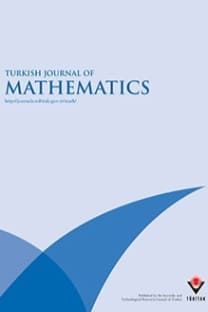Boundary points of self-affine sets in $Bbb{R}$
Boundary points of self-affine sets in $Bbb{R}$
___
- [1] Falconer, K., Fractal Geometry, Mathematical Foundations and Applications, Wiley, 1990.
- [2] Gröchenig, K. and Madych, W., Multiresolution analysis, Haar bases, and self-similar tilings, IEEE Trans. Info. Theory 38 (1992), 556-568.
- [3] He, X.-G., Lau, K.-S. and Rao, H., Self-affine sets and graph-directed systems, Constr. Approx., to appear.
- [4] Kirat, I. and Lau, K. S., On the connectedness of self-affine tiles, J. London Math. Soc., (2) 62 (2000), 291-304.
- [5] Lagarias, J. C. and Wang, Y., Integral self-affine tiles in Rn, Adv. Math. 121 (1996), 21-49.
- [6] Lagarias, J. C. and Wang, Y., Integral self-affine tiles in Rn I. Standard and nonstandard digit sets, J. London Math. Soc. 54 (1996), 161-179.
- [7] Odlyzko, A. M., Non-negative digit sets in positional number systems, Proc. London Math. Soc. 3 37 (1978), 213-229.
- [8] Strichartz, R. S. and Wang, Y., Geometry of self-affine tiles I, Indiana Univ. Math. J. 48 (1999), 1-23.
- ISSN: 1300-0098
- Yayın Aralığı: 6
- Yayıncı: TÜBİTAK
On Pseudohyperbolical Curves in Minkowski Space-Time
Çetin CAMCI, Kazım İLARSLAN, Emilija SUCUROVIC
Groups Whose Proper Subgroups are Hypercentral of Length at Most \leq w
On locally m -pseudoconvex $A^ast$-algebras
Boundary points of self-affine sets in $Bbb{R}$
Boundary Points of Self-Affine Sets in R
On Prime Submodules of Finitely Generated Free Modules
On Lightlike Hypersurfaces of a Semi-Riemannian Space form
Erol KILIÇ, Rıfat GÜNEŞ, Bayram ŞAHİN
Some Asymptotic Results for the Semi-Markovian Random Walk with a Special Barrier
Groups whose proper subgroups are hypercentral of length at most $leqomega$
